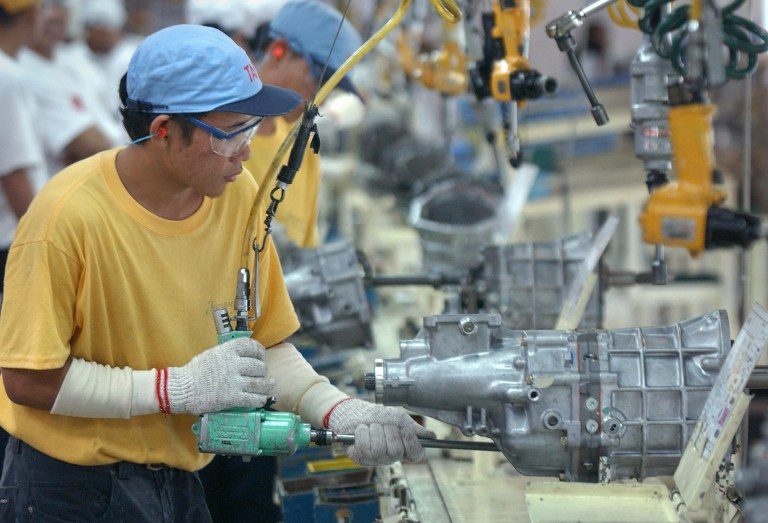SUMMARY
This is AI generated summarization, which may have errors. For context, always refer to the full article.

MANILA, Philippines – Philippine merchandise exports fell by 24.7% in September 2015, the National Economic and Development Authority (NEDA) reported Tuesday, November 10.
NEDA noted that this is the biggest decline in export revenues since September 2011, when the supply-chain disruption in key Asian countries then caused a sharp fall in demand for electronics.
The Philippine Statistics Authority (PSA) said that total revenue from Philippine exports fell to $4.4 billion in September 2015 from $5.8 billion recorded in the same period in 2014.
Economic Planning Secretary Arsenio M. Balisacan said the decline mirrors a still sluggish external demand due to weak global economic activity and depressed commodity prices, which continue to strain exports growth.
“Nonetheless, signs of a possible rebound of the country’s merchandise exports in the fourth quarter are likely, owing to better prospects in Japan, US, and the Eurozone,” he added.
Year-on-year decline
Manufactured goods, which comprise about 87% of the country’s total merchandise exports, posted a year-on-year decline of 23.6% in September 2015. It fell to $3.8 billion from $5 billion in the same period in 2014.
Export earnings from agro-based products declined by 29% in September, down to $251.8 million from $354.7 million in the same period last year, attributed to lower receipts from fruits and vegetables, coconut products, sugar products, and other agro-products.
Outward shipment of mineral products decreased year-on-year by 32.6%, while petroleum products fell by 83.7% to $13.7 million in September 2015 from $83.8 million in the same period in 2014.
Maximize free trade agreements
NEDA Director General Balisacan said the government needs to further strengthen its efforts to diversify export markets in order to dissipate the impact of weak demand from a relatively concentrated market.
“Tapping the opportunities from the export of services such as outsourcing (Information Technology-Business Process Outsourcing) can in part compensate for the decline in goods exports,” he added.
In this regard, the Cabinet official said that maximizing the potential of free trade agreements should be explored together with implementing programs that will address bottlenecks experienced by the export sector.
Balisacan said the country needs to explore the country’s inclusion in the Trans Pacific Partnership (TPP) agreement, which can bring enormous benefits to participating countries in terms of trade, and cited Vietnam’s continuous growth in exports in its ability to take advantage of trade opportunities.
Spanning about two-fifths of the global economy, the hard-won TPP deal aims to set the rules for 21st century trade and investment, and press non-member China to shape its behavior in commerce, investment, and business regulation to TPP standards.
Under the deal, most tariffs were to be eliminated or slashed on everything from beef, dairy products, wine, sugar, rice, horticulture, and seafood through to manufactured products, resources and energy.
Those involved are the US, Japan, Canada, Australia, Brunei, Chile, Malaysia, Mexico, New Zealand, Peru, Singapore and Vietnam. – Rappler.com
Add a comment
How does this make you feel?
There are no comments yet. Add your comment to start the conversation.